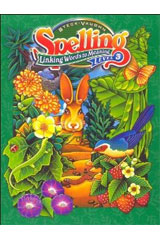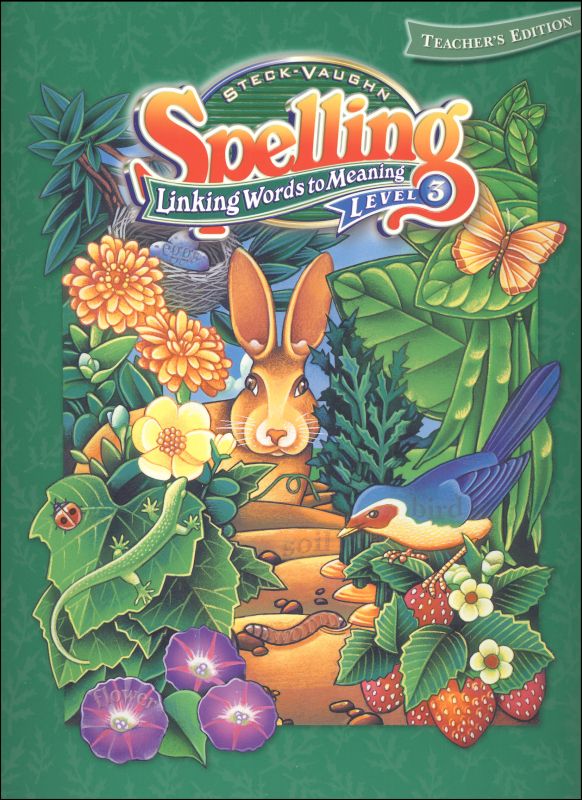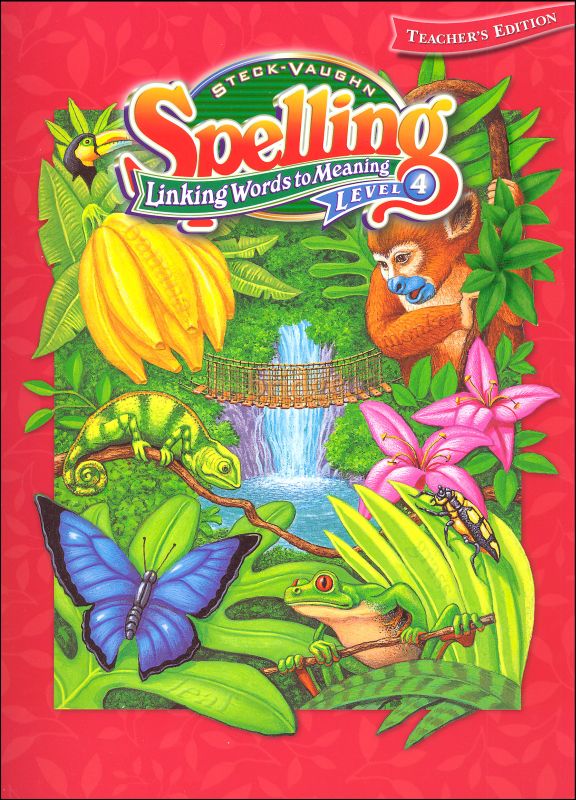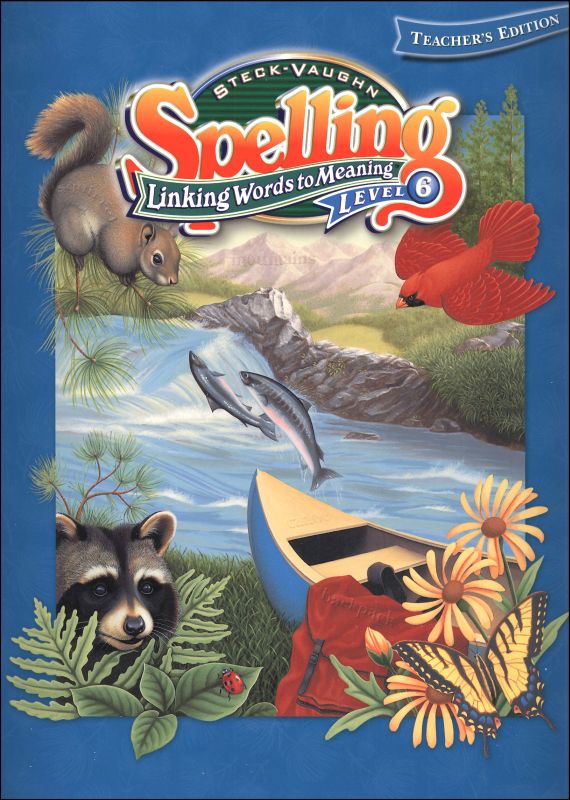Steck-Vaughn Spelling: Linking Words to Meaning is a spelling series that strives to connect spelling skills to applications in writing, grammar, usage, and vocabulary. The program is phonetically-based, teaching students to sound out words, identify phonetic patterns, and recognize possible spellings for phonetic sounds.
These spelling courses for grades one through six each have 36 lessons. Lessons are presented in six units with six lessons per unit; the sixth lesson always serves as a review.
Softcover student workbooks are very attractively designed and printed in full color. Font sizes gradually decrease from Level 1 to Level 6 but never enough to make pages feel overcrowded.
The Level 1 course for first grade differs from the other courses in some respects, but the courses otherwise follow a very similar pattern. Each week begins with a pre-test and concludes with a post-test. Children will immediately correct their pre-tests to determine which words present a challenge. Either page five or six at the beginning of each student book lists “Study Steps to Learn a Word,” and the following page lists “Spelling Strategies” students might use to try to figure out the correct spelling when they are uncertain. Parents need to work with students as needed to help them implement these study tools and strategies. Students should also learn to use the list of commonly-misspelled words, the spelling table, and the spelling dictionary that are at the back of each student book.
Each regular lesson in Level 1 has four pages, while all other levels dedicate six pages to each regular lesson. Review lessons have four pages each—three with review activities and a fourth page for a composition activity.
In Level 1, the first twelve lessons differ from the rest of the book since they serve as a phonics review. Beginning with lesson 13, they follow a similar sequence for each lesson with “say and write,” “spell and write,” “read and write,” and proofreading activities. The final activity in each lesson deals with grammar, dictionary skills, or composition. Level 1 presents six spelling words per lesson beginning with lesson 13.
For all other levels the number of spelling words gradually increases up to 20 words per lesson in Level 6. The sequence of activities is similar for each level: “say and listen,” “think and sort,” “spelling and meaning,” “spelling in context,” “spelling and writing,” and “challenge yourself.” Also, before the challenge activity there will be a grammar and usage, dictionary, or “using the spelling table” activity.
I realize that the activity titles are not very revealing. Many of the activities require students to fill in the blanks, but they do so in a variety of ways that stimulate critical thinking rather than simple memorization. In the course of the lessons, students think about phonetic elements and their spellings as well as definitions, synonyms, antonyms, homonyms, derivatives, meanings of words in contexts, and other concepts that relate to spelling. “Spelling and writing” activities include original composition assignments that encourage students to incorporate spelling words from the week’s list. Students learn to proofread, looking for spelling, capitalization, and punctuation errors. A “word story” in each lesson explains the origin of one of the spelling words. The “challenge yourself” activity presents four difficult words for students to match up with a statement, then directs them to write a sentence using the word properly to show its meaning.
In review lessons, students will take pre- and post-tests over words for the entire unit. They will complete reinforcement activities on three pages. The composition component of the review lessons provides significant instruction and practice in the writing process. For example, in Level 3 students learn to write various types of narratives, a friendly letter, a description, and a how-to paragraph.
Student books are very reasonably priced, but teacher’s guides might seem expensive if you are teaching only one student. While you might be able to figure out the bulk of the activities and answers in the first few levels, it becomes increasingly challenging and time-consuming to do so as the difficulty progresses. In addition to all of the answers overprinted onto images of student pages, the teacher's guides have other helpful resources.
For example, for the post-test each week, students will write entire sentences that include the spelling words as they are dictated by the parent or teacher. Sample sentences are included in the teacher’s guide so you don’t have to come up with appropriate sentences.
Many additional teaching suggestions are included to address various learning styles and special needs as well as enrichment words that might be added for advanced students and enrichment activities that might be used by all students if time permits. The teacher’s guide also includes reproducible graphic organizers, a puzzle page for each lesson, and “Spelling at Home” pages (that were written to send home to parents for each unit) that have some creative games and activities that you might want to use. In addition, you might want to use unit review tests that are designed in a standardized test format with bubbles to fill in.
Summary
The Steck-Vaughn Spelling series should be an excellent option for those who want spelling lessons that link to the broader realm of language arts. This series accomplishes that with a variety of worthwhile activities that should enhance skills in critical thinking, vocabulary, grammar, and composition.




















